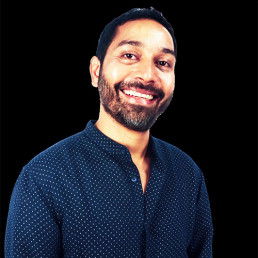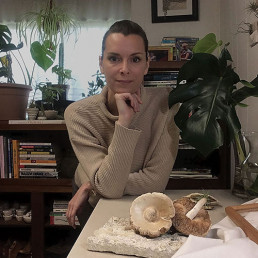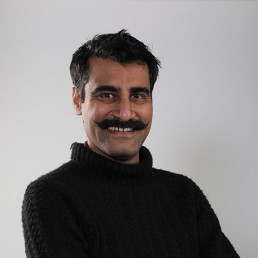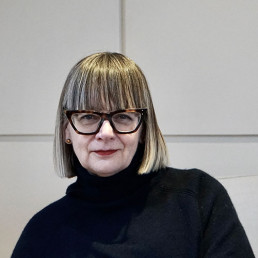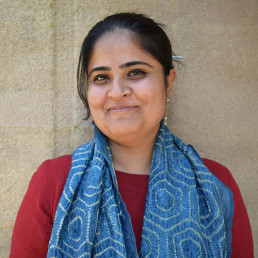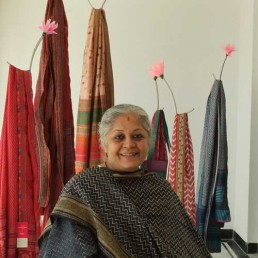World Cafe Networking
Be a part of the conference networking event discussing the themes The Emergent, The Urgent, and The Incumbent.
- Home
- Past Events
- World Cafe Networking
The aftermath of the recent global pandemic has forced us to review and reform our fashion needs & consumption. It has compelled us to reestablish and recalibrate our future endeavors in material diversity, resource exchange, emergent philosophies and beyond.
Date: 27th July
#TheDigitalFlix
Digital Room: School of Contemporary Media(SOCM)
The pandemic positively impacted the global over-the-top (OTT) and videos on demand (VoD) market in 2020. Media and entertainment sector witnessed some of the big blockbuster movies released worldwide on OTT platforms. What is the future of OTT? It is slated to transform and innovate with the blockchain technology. The technology has the potential to disrupt the traditional business model and resolve several copyright, content creation, aggregation, distribution and monetisation challenges with blockchain-based media solutions.
#PauseAndReflect
Digital Room: School Of Fashion (SOF)
Time: 11 AM (IST)
We may have crossed the point of no return in a way, but the attempt now is to step back, reassess what is really working, for the people, for the planet and for in the integrity of fashion itself, which many believe has moved away from presenting one’s identity to become merely clothing.
#ReformandShift
Digital Room: School Of Design (SOD)
Time: 11 AM (IST)
The pandemic has accelerated some trends that were in motion prior to the crisis, besides shopping shifts to digital, working shifts to remote, education shifts to online… Many aspects of our working, living have been reformed. Even though the pandemic is ending, but the consumer behaviour has undoubtedly changed over the past year. What will be the future ways of business/services/products, how shall we design towards that trend?
#DirectToConsumerOurSaviour
Digital Room: School of Creative Business (SCB)
Time: 11 AM (IST)
The pandemic served to accelerate the digital shift, some say by 10 years. It also accelerated the rise of DTC brands, but not for the same reasons. eCommerce spiked because consumers demanded it and drove it. Enter DTC brands. DTC brands typically save on costs by leaving out “middlemen” distributors. As such, this year’s outlook highlights the agility of these brands to deliver more for less. DTC Companies drove into the pandemic and adapted to it to ride the wave that was a massive digital shift. The factors that influenced their decision? One was driven by demand; the other, by necessity. There are two kinds of DTC brands that have arisen. The first had to go direct-to-consumer as products because they didn’t have a shot at traditional retail exposure. The second group went direct to the consumer because its manufacturers didn’t like the retail exposure they were getting, and the retail-scape as we know it, has changed irrevocably. Join us in this conversation and ponder the rise of creativity, attractive discounting strategies, community centric approach to brand building, and the sustainability of this retail strategy.
Human existence is a subset of natural ecosystem however we may have undervalued its impact on our existence. This agenda explores the relation of fashion and nature, the habit and habitat and its impact that surfaces with assembled perspectives and actions.
Date: 27th July
#TheSocialEnterprise
Digital Room: School Of Fashion (SOF)
Time: 4 PM (IST)
A type of enterprise that lays equal focus on sharing and transparency across its value chain. Where the local economy and ecology work together to uplift all involved in the process. #VocalForLocal Push, promote and use local goods to reduce the impact on the environment and fuel the local economy. This also consideres promoting local businesses when traveling to a different city or country.
#ECO-Constructivism
Digital Room: School Of Design (SOD)
Time: 4 PM (IST)
The pandemic and post Covid-19 era may well become an opportunity and a starting point to over-turn some of the many damaging patterns of unscrupulous and inconsiderate consumption, in turn helping us, appreciate environmentally constructive value systems that consider and interact with the fact that our own human existence is a subset of our entire natural ecosystem but perhaps its impact has been undervalued. It perhaps high time, we humans aim to finally elevate environment as a central focus and the bedrock for all new design innovation and crafts. We may need to somehow let go of the past few decades of human centric approach to finding solutions and readjusting to the honest needs of our planet as the center of innovation practice.
For designers & creatives, it cannot merely be in the form of a soft nudge anymore, or a beautifully designed info graphics and pictorial warning at the back of a packaging or such as – saying – “please recycle” or a sustainable green practice initiative such as a social awareness campaign. They now need to be designed to deliver, not simply intend to!
#TheDigitalDemocracy
Digital Room: School of Contemporary Media (SOCM)
Time: 4 PM (IST)
Social Media has changed the way we connect, communicate and create content. More than 55% world’s population is active on one social media platform or the other and adds 17 new users every second. With this unparallel reach, it has shattered the glass ceiling and democratized the traditional celebrity status and created the new hero – content. It has given more power to consumers on the way we shop, engage with brands, share reviews and feedbacks. The pandemic-driven ecommerce boom has helped accelerate the growth of social commerce and 2021-22 is expected to bring even more opportunities for brands to directly engage with new audiences with bots, AR/VR and more.
#AI-TheNextDigitalFrontier
Digital Room: School of Creative Business (SCB)
Time: 4 PM (IST)
Mankind’s proclivity towards tools and machines has eventually led it to create the most unsettling creation yet. Yes, the disruption brought about by the innovation in machines using Artificial Intelligence. You no longer have machines doing repetitive jobs but machines that can learn and improve and improvise. These are the next generation Doctors, Drivers, Engineers, Tutors, Managers, you name it.
The area where AI is most disruptive is in the Digital Space. Artificial Intelligence has the predilection to hasten changes in market share revenue and profits. This is the age of Analytics and a Data driven organization, society and world.
It is widely recognized that AI will bring about the fourth industrial revolution accompanied by a major disruption in the workforce across all levels. Of course, it will also create the next level of skill sets needed to propel the economy towards future growth and is expected to double the World GDP every few months.
This establishes the strong inclusive relationship between workmanship and quality – Hand that makes. The recent progressive experiments have reimagined the makers space, connected the consumer to the artisans, while celebrating craftsmanship and appreciating their skills.
Date: 28th July
#FollowTheMaker
Digital Room: School Of Fashion (SOF)
Time: 1 PM (IST)
An extention of the maker movement and growing interest in meeting the makers, the hands behind the fashion and craft that contribute to the consious fashion movement, follow the maker proposes to be a consumer driven movement that will ensure that makers are acknowledged and celebrated.
#GrasstoGold
Digital Room: School Of Design (SOD)
Time: 1 PM (IST)
Craft has always been a play of material, color and skills mastered over years and passed down through generations. Like an artist it’s not a work of a singular person but a valued and a responsible role played by the community. The members of this community are not just the creators of the visually appealing masterpieces but the appreciators as well, who find aesthetic pleasure in having them in their possession.
What is a well-crafted masterpiece if it has no value seekers? Each crafted piece has a seeker who holds a different value from the other. For some it’s about possessing an expensive, well-crafted product to celebrate their wealthy lifestyle, while for others crafting skills can be viewed as a valued appreciation of going sustainable, being vocal for local and celebrating domestic craftsmanship or it can be a possession of collectibles to pay homage to traditions and cultures.
These skills have now started to blur the edge of its offering and are questioning the expansion of its realm. What do you think the purview of appreciating these mastered skills should be? Can craft be only applied to an object? Shouldn’t a chef who has acquired its skills from his/her mastered over time be considered as skilled craftsman? Shouldn’t the much savored and appreciated cuisines be addressed as well hand crafted recipes?
Host: Tushar Juyal
#TheFutureOfMagazines
Digital Room: School of Contemporary Media(SOCM)
Time: 1 PM (IST)
News is in a state of flux with digital media dominating the traditional magazines, newspaper & tabloids. In fact, video is the new medium of telling stories whether fiction, non-fiction or news. People prefer to see in their own time, instead of reading or watching TV at a fixed time. News watching on the run is the new mantra, or is it?
#RemoteAreaWorkSustenance
Digital Room: School of Creative Business (SCB)
Time: 1 PM (IST)
With the pandemic making the online office a reality, there will be an upsurge of companies now wanting to function in remote areas. The Prudential survey confirmed that 87% of American workers who have been working remotely during the pandemic would prefer to continue working from home at least one day a week, post-COVID. The option of employees to be employed to get transferred to a remote area is now more real than was before. Talent migration is on the horizon as workers look for increased flexibility and opportunities to grow their careers F12.The adaptability of an employee will now be seen on the basis of how he or she can adapt to work in a remote area. This will also bring in the development of remote areas like rural marketing in India. The large market which is still untouched will now get the accessibility of the latest products and services because of the success of virtual offices being a success.
